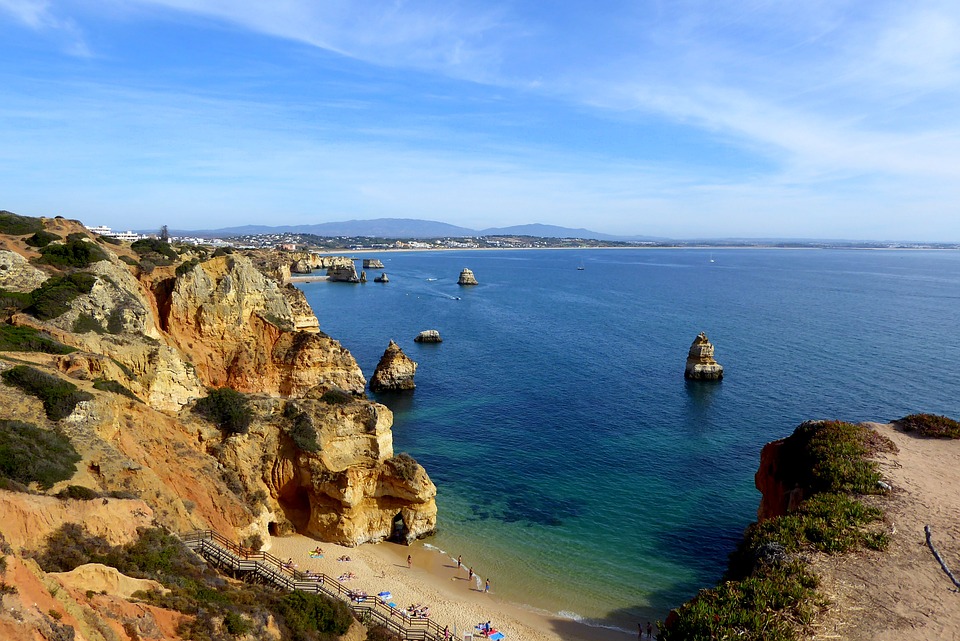
Every day, millions of people enjoy the pleasure and benefits of personal care products (PCPs). From hair colors to lipsticks, body lotions to cosmetics, fragrances to sunscreens, a huge variety of products are available as a societal demand, mostly in developed countries. These essentials touch people’s senses, needs, and imagination in all stages of life.
Although they can contribute to our health and wellbeing, their intense utilization leads to aquatic environment contamination, as they are continuously released in large quantities directly through normal use and indirectly by domestic and industrial wastewaters, being considered nowadays as emerging environmental contaminants (EECs) due to their “pseudo persistence” in the environment on a global scale.
Among PCPs, fragrances are a class of compounds whose function is to give a pleasant scent to different products, while UV-filters are chemicals designed to attenuate the negative effects of sunlight exposure.. These two classes of compounds have common characteristics, namely hydrophobicity, which confers an ability to accumulate in living tissues with possible toxic effects in aquatic organisms exposed to these chemicals in their habitat.
Marine mussels are sessile aquatic organisms that can retain and bioaccumulate chemicals from the surrounding waters through filter feeding activities. They are widely used as “sentinel” species in monitoring programs because they combine many characteristics required by bioindicator species: wide distribution, abundance, restrict home range, and ease of sampling. Moreover, their economic importance as a seafood resource is also a factor that makes them a good choice to monitor different kind of contaminants in coastal waters (Cunha et al., 2017).
Knowing this and looking to the Portuguese coastline, our group conducted a study to ascertain the current status of the contamination levels of some PCPs, in wild mussels along the entire coastline. Seven musk fragrances (galaxolide (HHCB), tonalide (AHTN), celestolide (ADBI), musk moskene (MM), musk xylene (MX), musk ketone (MK), and ethylene brassylate (MT)) and five UV-filters (4-MBC, BP-3, EHMC, isoamyl 4-methoxycinnamate (IMC), and 2-ethylhexyl salicylate (EHS)) were selected based on their high utilization and detection frequency reported in previous studies. Mussel specimens (Mytilus galloprovincialis and Mytilus edulis) were hand-collected during 2015 from seven different beaches along the Portuguese coastline.
To enable the extraction of these compounds from complex matrix-like mussels, a “green” and high-sensitivity analytical approach was attempted. The procedure included the coupling of two modern extraction techniques QuEChERS (Quick, Easy, Cheap, Effective, Rugged and Safe) and DLLME (dispersive liquid-liquid microextraction), followed by gas chromatography with mass spectrometry (GC-MS) analysis. The results showed that wild mussels collected along Portuguese coastline were largely contaminated with these chemicals (93% positive samples).
From the twelve target analytes, only two fragrances were not detected (musk ketone and ethylene brassylate). On the other hand, the polycyclic musk AHTN and two UV-filters, EHS and EHMC, were present in all positive samples.
UV-filters were more frequently detected (90%) and quantified at higher levels (average total concentration reaching 1155.8 ng/g (dw)) than musk fragrances (70% of detection frequency and average total concentration of 397.7 ng/g (dw)).
Looking at the overall results, it was possible to establish a correlation between population density and highly industrialized locations with higher levels of musks and UV-filters. Furthermore, lower levels of PCPs were found in beaches located in protected areas. As expected, an increase in UV-filters levels was observed after the summer, likely due to the intense period of recreational activities.
We think that a systematic monitoring of these compounds is important in order to help understand the possible negative effects of long-term exposure in aquatic organisms and ultimately in humans as consumers of seafood. Also, it would help improve legislation regarding the levels that these compounds can be used in PCPs formulations.
These findings are described in the article entitled Occurrence, profile and spatial distribution of UV-filters and musk fragrances in mussels from Portuguese coastline, recently published in the journal Marine Environmental Research. The work was conducted by Marisa Castro, under the supervision of Sara Cunha and José Fernandes from Porto University, and collaboration of Angelina Pena from the University of Coimbra, Portugal.









